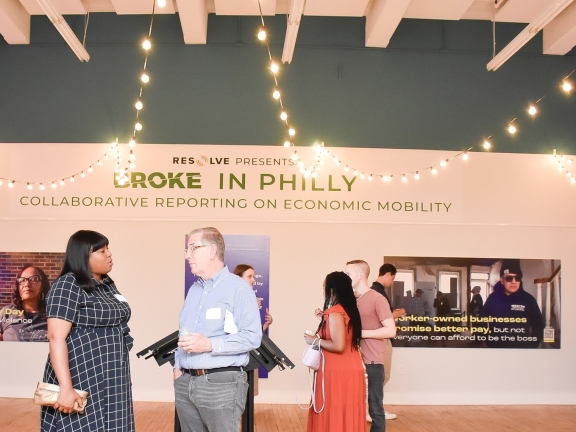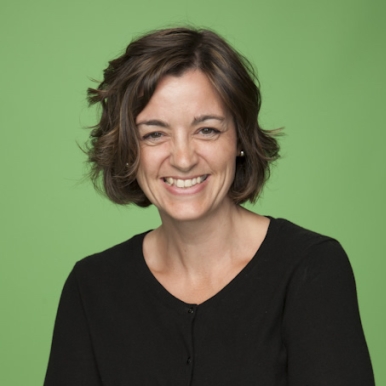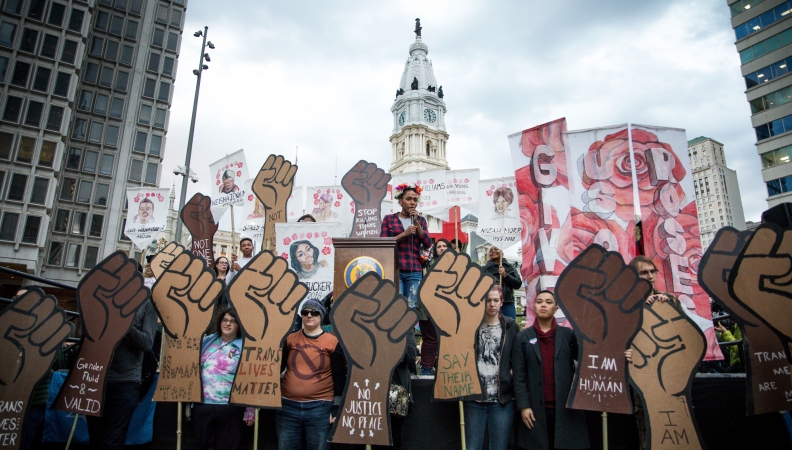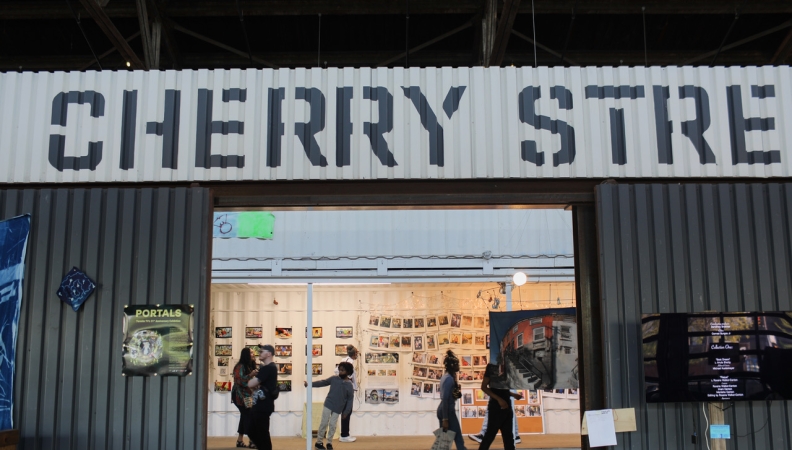Part 2: How Community Partners Guided Our Refined Grant Strategies

In my previous essay, I shared a little bit of Independence Public Media Foundation’s history, and our decision and process over the last 18 months to reconsider our values, vision, mission, and grantmaking goals + guidelines. Today, I want to focus on the grantmaking goals + guidelines specifically, and offer more details about the community feedback we received.
At the risk of stating the obvious, a foundation’s grantmaking goals + guidelines provide the focus and framework which helps staff make decisions. Therefore, the language of those guidelines needs to be as clear and consistent and as well-understood as possible. After several years of testing out our original version, we felt that the language was at times either too broad or too vague, which was a challenge to making consistent, logical decisions.
Now, when foundations talk about updating their grantmaking goals + guidelines, it makes nonprofits (rightly) nervous that they may suddenly find themselves on the outside, no longer a match for that foundation’s support. I want to emphasize that we did not significantly change direction, with one exception, and I think all of our current grantees will still see themselves in these guidelines. Rather, we worked hard to clarify what we mean by our guidelines, by spelling them out more fully, using more consistent language, giving examples, and offering our definitions, which was consistent with what our community partners asked us to do, too.
The one fairly substantial change we did make does not affect current grantees, but does affect organizations who perhaps hoped to apply: we narrowed what we will fund related to digital equity. In 2021, we launched our only open call for digital equity proposals, and through it, we funded 18 (one-year) projects including those focused on digital navigation (skill building for digital technologies for those with low access to technology), refurbishing technology, building community internet networks, and digital equity research, among others. Through these important projects, we learned a great deal, and eventually agreed that we simply didn’t have the resources for tackling the many areas of digital equity that desperately need funding. As a result, we narrowed our focus to: 1) building out community internet infrastructure, which is consistent with how we approach building out community media infrastructure, and 2) support for community organizing for digital equity, which is fundamental to advancing digital equity. You can see both of these areas with examples in the “Internet for All” section of the guidelines further down in this essay.
As I mentioned in Part 1 of this series, we called upon our friend Wilfredo Hernandez of Communitas Arts + Culture to engage our grantees, funding colleagues, and other community partners in conversation about the proposed updates to our vision, mission, and grantmaking goals + guidelines. Through focus groups, one-on-one interviews, and surveys, we received a wealth of feedback, and largely positive reaction to the proposed updates. Four themes / requests emerged:
- Define our terms and parameters better (e.g. better definitions of specific terms, being more geographically specific in our language, etc.)
- Strategic support beyond “making” media (e.g. helping with distribution of media, outreach, fundraising, etc.) [Note: This request was not so much about the language of our guidelines, but a request for resources, primarily with expanding audiences for the media that’s being created]
- Defining trust-based philanthropy and IPMF’s positioning in the field (i.e. what is trust-based philanthropy, and what specifically is IPMF committing to?)
- Consistent use of and growth of language (e.g. using clear and consistent language around people’s and communities’ identities, recognizing that language is constantly evolving).
And although every funder knows - as the joke goes - that grantees and potential grantees think we are the smartest, funniest, and best-looking people in the room, we nevertheless felt relieved and gratified by the consistent feedback that they were happy with our proposed updates, even if we didn’t incorporate any of their feedback. We did, in fact, make many changes to the draft in response to what our community asked of us, and we hope that we have honored their input and are more clear in our goals, intentions, and guidelines.
We are excited to share these publicly for the first time:
The Problem We Are Trying To Solve
Media has been and continues to be co-opted by white supremacy, capitalism, patriarchy, and other forms of oppression. This results in the spread of harmful, limited and inaccurate narratives that exploit and disempower communities, silencing their voices and experiences, and perpetuating oppression while reinforcing power structures.
Goals and Strategies
IPMF prioritizes funding for media and storytelling-projects and organizations that:
- Are led by Black, Indigenous, and people of color, women, people who are LGBTQIA+, people with disabilities, economically disadvantaged and working-class people, immigrants and refugees, youth, and people directly impacted by mass incarceration;
- Serve communities that experience the most harmful effects of systemic racism and other forms of oppressions;
- Directly address and disrupt systemic inequality;
- Imagine and design alternative realities built on courage, equity, justice, belonging, and/or joy.
We are focused on these specific areas for our funding:
Community Storytelling
Goal: We believe that storytelling builds community and brings ideas to life. We aim to amplify community storytelling so that diverse and marginalized voices are centered, heard and preserved.
We will do this by supporting:
- Increased representation and visibility of storytelling by communities harmed by systems of oppression and media erasure
- Independent filmmaking by emerging and professional storytellers to tell their own stories and share it with a wider audience
- Community radio networks and collaborative audio storytelling that reports, discusses, connects, and disseminates news and stories important to neighborhoods in the region
- New and existing archives, community history projects, and BIPOC* stories to help communities deepen their connections, reclaim narratives, and build power
- Growing audiences that engage with independent filmmaking, community storytelling and archives.
Examples:
- BlackStar Philadelphia Filmmaker Lab, a fellowship designed to support emerging Black, Brown, and Indigenous filmmakers.
- Presente Media, a Latinx collective of journalists and filmmakers producing bilingual media focused on social justice.
- G-town Radio, a community radio station in Germantown focusing on local news, ideas, sounds not heard on mainstream radio.
Narrative Shift for Movement Building
Goal: We believe that narratives shape people’s understanding of their world and their interactions with others and the institutions around us. We seek to advance narratives that support movements that challenge systemic oppression, build collective power, and shape policies reflecting holistic, collective needs.
We will do this by supporting:
- Media making for social justice movement building in the region
- Dismantling of policing and prison narratives that perpetuate harm in, and incarceration of, BIPOC communities
- Reforms intended to change journalistic practices to address media harm
Examples:
- Resolve Philly, a unique journalism organization built on equity, collaboration among multiple media properties, and the elevation of community voices and solutions in local news.
- Amistad Law Project, a public interest law firm and organizing project working to end mass incarceration in Pennsylvania through creative narrative interventions.
- Shift the Narrative, a coalition spearheaded by Movement Alliance Project, Free Press, and the Media, Inequality & Change (MIC) Center to change the narratives around violence, crime and safety in local media. The three organizations are conducting research (MIC Center), leading community organizing and community media making (Movement Alliance Project), and supporting newsroom collaboration between journalists and community members (Free Press) to build a model in which communities can harness the power of media to create their own narratives.
Internet for All
Goal: We believe the internet is a public utility and a right, not a luxury. We want to ensure that all communities have access to open, affordable, and reliable internet.
We will do this by supporting:
- Expansion of community internet that is collectively owned and managed by local communities
- Strengthening community organizing for digital equity
Examples:
- Philly Community Wireless, a volunteer-led coalition of technologists and organizers working to build community controlled wireless internet networks in Philadelphia.
- Technology Learning Collaborative, a professional development organization advocating for digital access, inclusion, and literacy in Philadelphia.
In addition to the above goals, we are pursuing initiatives to:
- Strengthen existing and create new neighborhood community media making centers in the region
- Expand funding and funder partnerships for community media and narrative power in the region
- Model and encourage philanthropic practices and relationship-building that center trust, patience, partnership, and accountability to communities
Our Definitions
Media
We define media as the creation and sharing of information, ideas, and stories. The Foundation’s goals reflect an inclusive definition of media, encompassing filmmaking, journalism, digital technologies, and creative expression, among other types of media, as a pathway for building power with communities.
Community Owned Media
We are particularly invested in supporting media making that is created, owned, and maintained by marginalized communities who have experienced erasure in mainstream media.
BIPOC
BIPOC stands for Black, Indigenous, and People of Color. We understand people of color to include people of the following Asian, African, Arabic, multiracial and mixed Latine/Latin@/Hispanic, Caribbean, Middle Eastern and North African, Pacific Islands, Native Hawaiian, and South Asian/West Indian diasporas. We also view people of color to include people of mixed or multiple ethnic backgrounds.
We also acknowledge that our current understanding of race is based on the rise of European imperialism forced by White Settlers and language around it continues to evolve. As Ta-Nehisi Coates asserts, “there’s no real consistent notion of race across time and geography. Any definition of race always depends upon power.”
Trust-Based Philanthropy
We strive to live the values and practices of trust-based philanthropy, which prioritizes trusting relationships and collaboration with grantee partners and a real effort to uproot harmful power dynamics in the funding and nonprofit sector. We appreciate the definitions and resources at trustbasedphilanthropy.org.
Digital Equity
Digital Equity is a condition in which all individuals and communities have access and the capacity to fully use information technology for full participation in our society, democracy and economy. Digital Equity is necessary for civic and cultural participation, employment, lifelong learning, and access to essential services. (Source: digitalinclusion.org)
Community Internet
Community internet refers to broadband networks that are collectively owned and managed by a local community for non-profit and community purposes. They are comprised of collectives and cooperatives, non-profit organizations and NGOs, community members and residents who work together to build and control internet infrastructure in their shared neighborhoods and regions. Often organized in a grassroots fashion, community networks seek to empower local community members to exercise their right to communicate, under the principles of democratic participation, justice, diversity, and plurality (Source: Philly Community Wireless). Click to watch this video from Philly Community Wireless for more information.
Coming Next: Part 3: What to Expect From Our Grantmaking in 2024 and Beyond
Photo credit: Resolve Philly "Broke in Philly" 2023 Retrospective




